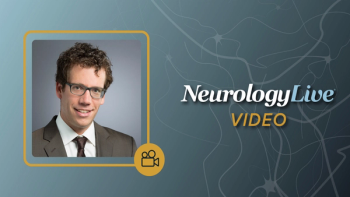
Neurocognitive Outcomes in Primary CNS Lymphoma: Clinical Implications
Primary central nervous system lymphoma (PCNSL) is a rare but aggressive malignancy that accounts for approximately 3% of all primary CNS cancer. New studies have changed the landscape of PCNSL treatment paradigms and expectations for outcome.
Primary central nervous system lymphoma (PCNSL) is a rare but aggressive malignancy that accounts for approximately 3% of all primary CNS cancers, although if secondary CNS involvement by systemic lymphoma is included, the proportion of all CNS malignancies is approximately 6%.1 It is more common in older individuals, with a median age at diagnosis of 65 years. Treatment strategies for PCNSL have evolved over the past 15 years. Whereas whole brain radiation therapy was historically considered the standard of care for PCNSL, treatments with high dose methotrexate, CNS penetrating chemotherapy, and autologous stem cell transplantation have led to
Neurocognitive deficits can occur in PCNSL as a direct effect of the CNS disease. Tumor infiltration may occur as a focal contrast enhancing lesion on MRI or can involve widespread bilateral cortical and subcortical regions. The lesion and surrounding edema cause neurologic symptoms, including cognitive and behavioral changes in approximately
PCNSL is treated in an induction phase followed by a consolidation phase. The goal of induction treatment is to achieve complete remission (CR), usually defined as a complete regression of contrast enhancing tumor on MRI, which leads to improvement in the acute neurocognitive symptoms. In patients who achieve complete remission, neurocognitive changes can persist as symptoms of neurological damage done by the initial disease, although many patients report only minimal changes from their personal baseline. After obtaining complete remission, the goal of consolidative therapy is to balance the efficacy of the treatment against the risk of inducing progressive
In a landmark review of the PCNSL treatment literature, Correa and colleagues5 reported that the use of whole brain radiation therapy in combination with chemotherapy was more frequently associated with adverse neurocognitive outcomes than was the use of chemotherapy alone. However, the literature was limited at that time because inconsistent and unreliable methods were used in the measurement of cognitive function.
The International PCNSL Collaborative Group (IPCG)
Using these methods, a
Although the deleterious effects of standard dose whole-brain radiation therapy on neurocognitive function are well known, recent studies have suggested that a reduced dose regimen may be associated with less neurotoxicity.10,11 A prospective study examined treatment efficacy and cognitive outcome of combination therapy, which included induction chemotherapy (5-7 cycles of rituximab, methotrexate, procarbazine and vincristine) followed by consolidative whole brain radiation therapy at a reduced dose (23.4 Gy over 13 fractions). Although
More recently, treatment strategies have been developed that combine the efficacy of high-dose methotrexate with subsequent myeloablative therapy using a combination regimen of high-dose chemotherapy agents followed by autologous stem cell transplantation. In a study by
These studies have changed the landscape of PCNSL treatment paradigms and expectations for outcome. Patients and families can hope for long-term survival, without as much concern for progressive neurocognitive decline and dementia. However, a substantial proportion of patients acquire deficits at the time of presentation, which may persist and impact quality of life chronically, as the following case illustrates.
Case Vignette
Mr A began to develop personality change, characterized by reduced communication, flat affect, and lack of emotional responsiveness. He became impulsive, spending excessively and gambling. These concerns led to brain imaging, which revealed multifocal enhancing lesions, including extensive bifrontal involvement. Biopsy showed diffuse large B cell lymphoma. There was no lymphoma identified elsewhere in his body. He was treated with rituximab, methotrexate, procarbazine, vincristine, and cytarabine for 6 months. Brain imaging studies since that time have shown stable appearance of bifrontal ex-vacuo lesions in the medial prefrontal white matter, with no evidence of recurrence (Figure).
Neuropsychological evaluation was initially conducted during induction treatment, about 3 months after initial presentation, at which time Mr. A showed marked personality change and executive dysfunction. Over the ensuing 6 months, his cognitive function improved, but there was a persistent organic mood and personality change. Follow up evaluations at 12 months and 18 months after diagnosis have shown stable mild executive dysfunction and persistent organic affective disorder. The neuropsychology team assisted the patient and family with education, therapy to address behavioral issues, and supported a gradual return to supervised part-time vocational activity. He remained disabled however, and his personality and relationships are permanently changed compared with baseline.
To manage ongoing neurocognitive issues, the IPCG recommends integration of neuropsychology in the care of PCNSL as early as possible. Our current program design includes a brief neuropsychological evaluation at the time of induction therapy, with follow-up neuropsychology assessment at 3 to 6 month intervals during the first year of treatment, and more sparsely thereafter. The goal of neuropsychological care is to identify cognitive and behavioral needs, facilitate care for those issues, and enhance quality of life for patients and their family.
Disclosures:
Dr Parsons is Neuropsychology Section Head and a staff member, Cleveland Clinic Center for Behavioral Health and Rose Ella Burkhardt Brain Tumor and Neuro-Oncology Center, Cleveland, OH; Dr Batchelor is Professor of Neurology, Harvard Medical School, Stephen E. and Catherine Pappas Center for Neuro-Oncology, and Director, Division of Neuro-Oncology, Department of Neurology, Massachusetts General Hospital, Boston, MA.
References:
1. Ostrom QT, Gittleman H, Xu J, et al. CBTRUS Statistical Report: primary brain and other central nervous system tumors diagnosed in the United States in 2009-2013. Neuro Oncol. 2016;18:v1-v75.
2. Schorb E, Kasenda B, Atta J, et al. Prognosis of patients with primary central nervous system lymphoma after high-dose chemotherapy followed by autologous stem cell transplantation. Haematologica. 2013;98:765-770.
3. Kiefer T, Hirt C, Spath C, et al. Long-term follow-up of high-dose chemotherapy with autologous stem-cell transplantation and response-adapted whole-brain radiotherapy for newly diagnosed primary CNS lymphoma: results of the multicenter Ostdeutsche Studiengruppe Hamatologie und Onkologie OSHO-53 phase II study. Ann Oncol. 2012;23:1809-1812.
4. Nayak L, Pentsova E, Batchelor TT. Primary CNS lymphoma and neurologic complications of hematologic malignancies. Continuum. 2015;21:355-372.
5. Correa DD, Maron L, Harder H, et al. Cognitive functions in primary central nervous system lymphoma: literature review and assessment guidelines. Ann Oncol. 2007;18:1145-1151.
6. Abrey LE, Batchelor TT, Ferreri AJ, et al. Report of an international workshop to standardize baseline evaluation and response criteria for primary CNS lymphoma. J Clin Oncol. 2005;23:5034-5043.
7. Correa DD, Shi W, Abrey LE, et al. Cognitive functions in primary CNS lymphoma after single or combined modality regimens. Neuro Oncol. 2012;14:101-108.
8. Doolittle ND, Dosa E, Fu R, et al. Preservation of cognitive function in primary CNS lymphoma survivors a median of 12 years after enhanced chemotherapy delivery. J Clin Oncol. 2013;31:4026-4027.
9. Doolittle ND, Korfel A, Lubow MA, et al. Long-term cognitive function, neuroimaging, and quality of life in primary CNS lymphoma. Neurology. 2013;81:84-92.
10. Morris PG, Correa DD, Yahalom J, et al. Rituximab, methotrexate, procarbazine, and vincristine followed by consolidation reduced-dose whole-brain radiotherapy and cytarabine in newly diagnosed primary CNS lymphoma: final results and long-term outcome. J Clin Oncol. 2013;31:3971-3979.
11. Correa DD, Rocco-Donovan M, DeAngelis LM, et al. Prospective cognitive follow-up in primary CNS lymphoma patients treated with chemotherapy and reduced-dose radiotherapy. J Neurooncol. 2009;91:315-321.
12. Omuro A, Correa DD, DeAngelis LM, et al. R-MPV followed by high-dose chemotherapy with TBC and autologous stem-cell transplant for newly diagnosed primary CNS lymphoma. Blood. 2015;125:1403-1410.
Newsletter
Keep your finger on the pulse of neurology—subscribe to NeurologyLive for expert interviews, new data, and breakthrough treatment updates.




























